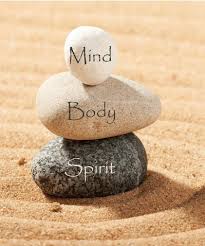
Living Within the Healing Stories
Marcus Borg, in his book The God We Never Knew, reminded us that the purpose of scripture is to "mediate the sacred," to connect us to the Divine. He also said that scripture is to be “lived within.” When we live within scripture we allow it to touch us, change us, inform us. When we live within scripture we are able to see the hidden messages because we’re opening our hearts and minds to the spirit and listening beyond the literal, face-value meanings. Living within scripture allows it to become relevant to our lives today.
John Shelby Spong tells the story of appearing on a late-night talk show with host Tom Snyder, who was broadcasting at that time out of a studio in Burbank, California. In the interview Spong mentioned that the gospels were generally dated between 70 and 100 CE. Tom, a lapsed Roman Catholic, bestirred himself and said: “Now wait a minute, Bishop. If the gospels were written that late, none of them could have been written by eyewitnesses.” Spong responded, “That is correct, Tom.” “But that is not what the nuns taught me in parochial school,“ he said. “What did they tell you?” Spong inquired. “They said that the disciples followed Jesus around and wrote down everything he said, and that is how the gospels came into being.” Amused, Spong asked, “Tom, did the nuns tell you that the disciples used spiral notebooks and ballpoint pens?”
As we listen to the gospel stories, it is important to remember things like this. No one was taking notes, no one was recording on their phone, and no eye witness ever wrote a gospel. Mark was written 40 years after the death of Jesus, and probably shortly after the fall and destruction of Jerusalem and the temple. The Jews have lost their homes, their livelihoods, their loved ones and their understanding of God who, in their belief, “lived” in the Temple.
It seems likely that the author of Mark chose this time to write a narrative of Jesus’ life not because Jesus was still around to do something, but because the author wanted to give people something to hold onto, a fulfillment of the Old Testament, proof that God still cared about them, hope in what appeared to be a very shaky future. You may remember that the miracle stories of Jesus, including the miraculous healings, are not found in any writings until Mark. The author of Mark wanted to give the people a Messiah, someone who would return to make everything right again. Being a healer was part of the job description for the Messiah. Pay attention to how the context colored the writings - not to judge them right or wrong, but to understand them as we live within them.
It’s easy to identify with the desire for the miraculous healing of ourselves or someone close to us.
The story of Jairus, the synagogue official, who begged Jesus to heal his daughter is the age old story of any parent, or grandparent, or aunt or uncle who are in crushing anguish for the child they love because that child is terribly ill. We can all understand that kind of fear as well as the compulsion and determination to do whatever it takes – even if eyebrows are raised (as they probably were in this situation where a Jewish higher-up turned not to sacrifices and priests, but to a former carpenter turned teacher roaming the countryside). Truly, I cannot imagine that there is a parent of a severely ill child anywhere out there who did not pray and bargain with God for that child’s life. And yet, not all children live.
The story of the hemorrhaging woman is the age old story of someone who has suffered for years, whose life savings have been spent on medical costs, who has tried everything, but none of it really worked, whose living has been curtailed, whose life has shrunk to four walls. No one knows what to do for or with these people, so they are now avoided, isolated. All they want is to live again, to be part of things again. We can feel the despair and desperation. I imagine every one of these folks has, at some point, whether they went to church or not, whether they’d ever believed in God or not, fervently prayed to God for an answer, for a cure, for help. But we know not all are cured.
In these stories we hear the age old desperate, crying out to God for help. Reaching out beyond hope. Praying for healing. In the gospel, Jesus hears the pleas, responds compassionately, and is able to heal the people; however, we know these stories don’t always end in miraculous healings.
So, how can it help us? Is there a lesson here? How can we learn from it and not resent when “we” or those we pray for, are not healed physically? This gospel speaks to me of two things that I'd like to share with you, but you may find your own messages and teachings. Go with whatever works for you.
First, I believe this gospel speaks to our need to participate in our own healing, knowing that we are supported and strengthened by the Spirit who is always with us. Our health is intimately tied with our spirituality – as such it is important to take care of ourselves physically, emotionally and spiritually. It’s important that we eat right, exercise, see doctors when we need help, deal with our emotional baggage and see therapists when we need to. And, we need to care for our souls, find ways to connect with the energy of the Divine (church, nature, music, volunteering – whatever fills your heart to overflowing). Denial and passivity in any of these areas will not make things better. Our egos and pride and fear need to be set aside and we need to do what it takes to be as healthy as we can. God doesn’t interfere to make us lose weight, make us get on the treadmill, make us get the help we need, or make us care for our spirits. Again, we need to participate in our own healing, knowing that we are supported and strengthened by the Spirit who is always with us.
Mark Nepo tells the story of a twenty-one-year-old woman who was dying of cancer and whose medical team caring was running out of treatment options. Watching this young woman waste away was weighing heavily on family and her medical team alike.
Nepo writes, "On a sun-filled September day near the end, the young woman was curled in her bed in a fetal position, her family around her, the blinds closed, the room dark and silent. Entering the room, her doctor felt their despair. She could see her patient staring into all the years she wouldn’t have. It was heartbreaking. Moved beyond all the standard protocols, her doctor felt compelled to climb in bed and hold her. This unexpected, quietly heroic offering broke death’s hold, for a long moment and brought everyone closer. After a time, the young woman sat up and asked for the blinds to be lifted. Light came flooding in, and her family began to speak and listen. They brought her juice. They all began to live again."
As beautiful as this moment was, it obviously could not halt the course of the disease. However, moments like this speak to the spiritual life-force energy that is present among us, especially when reach out with compassion, empathy, presence and touch. As Nepo says, "It can let light back into the room. And letting light back in, though it might not cure us or keep us from dying, is at the heart of all healing."
Second, there is nothing wrong with turning to the Spirit for help in our healing. God is not a magic genie giving us perfect lives if we ask the right way, or do the right thing. God doesn’t provide a magic elixir that will make us live forever. We are mortal. Life is tough. But I believe to the core of my being that there is a spiritual energy that connects all things, that there is a life force energy we from which we can draw strength, and as it strengthens our spirit, it can also strengthen our capacity for physical, spiritual, mental and emotional healing,
Professor and theologian, Elaine Pagels shares a story in her spiritual memoir, Why Religion? about an amazing spiritual experience she had while in the midst of grieving. Elaine’s husband, Heinz, died in a tragic hiking accident two years after their 6-year-old son passed away. The night before Heinz’s memorial service, Thomas Keating, Trappist monk and spiritual father of the Colorado monastery they had spent time at, called to say he was in New York visiting his sister and could he stop by for a visit? He arrived after the children had gone to sleep and he suggested that they meditate. Elaine wrote that his presence for her was "like a deep anchor into the unknown."
She continued, "After they sat together in silence for more than an hour, she asked him about something strange she had experienced during the meditation. 'Thomas,' she said, 'I felt as though waves of energy were coming toward me from various directions, like waves and ripples in an ocean, as though people were sending me energy; but I have no idea from whom they came. What – if anything – do you make of this?' He simply nodded and said 'Yes, that is what sometimes happens.' Before that time, when someone had said they were praying for her, she assumed it was a vague gesture, a nod to good intentions, but that night she had been surprised to feel those prayers, that energy being sent to her."
So, turn to the Spirit, Love Energy, Divine Essence, Universe, God for help in our healing. Allow others to pray for you and allow yourself to open to their energy. Hold others in love and light, sending them your energy. This is part of understanding our spirituality as an intimate part of our being, just as important to our wholeness as our mind and body. Healing may not always happen when and how we want, but that doesn't negate a loving Presence with us at all times. It doesn't mean we give up on God, the power of spiritual connection with others, or the power of prayer.
Love & Light!
Kaye



